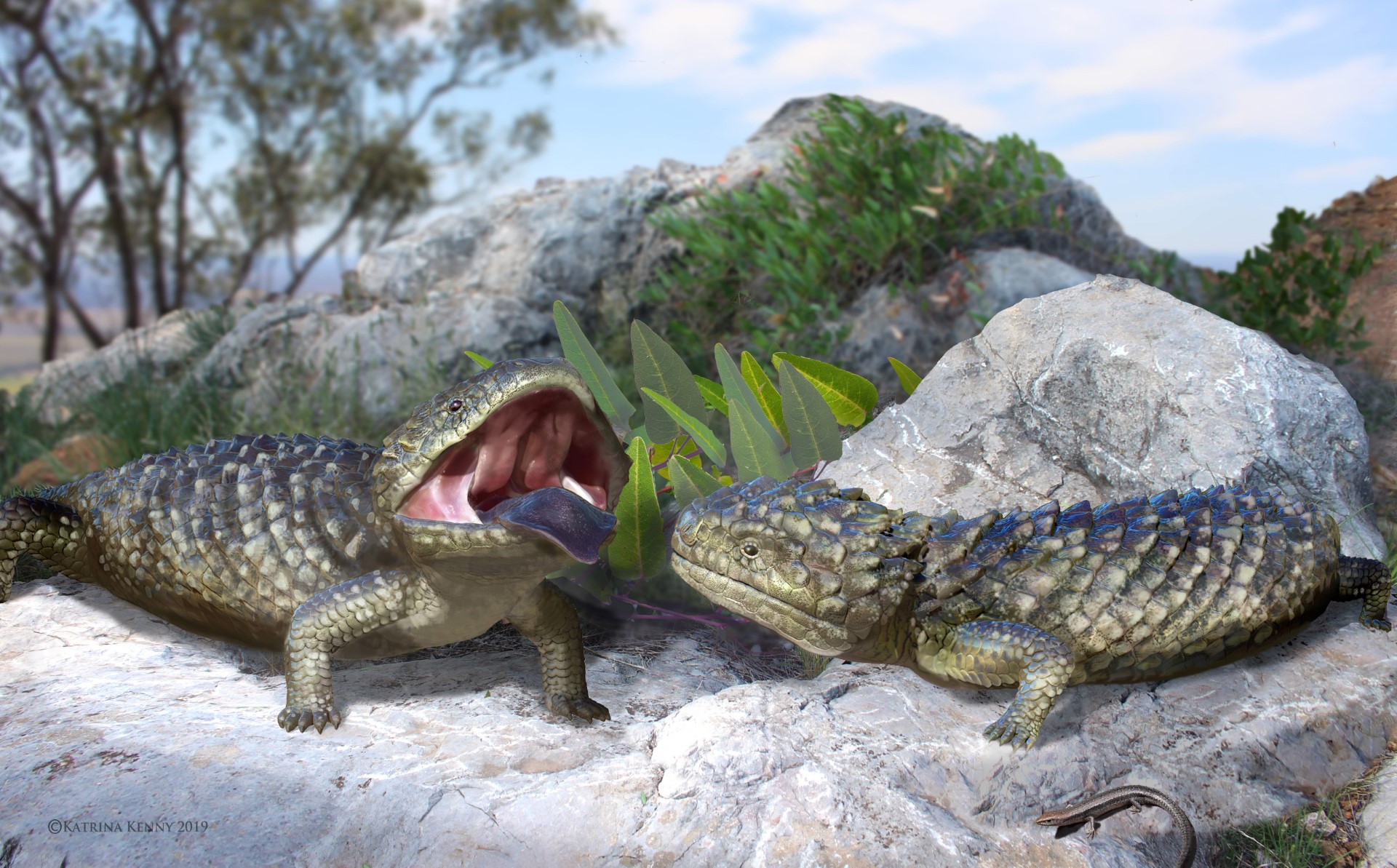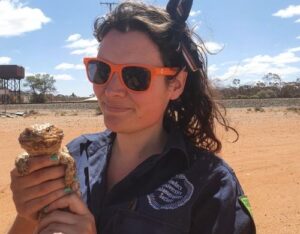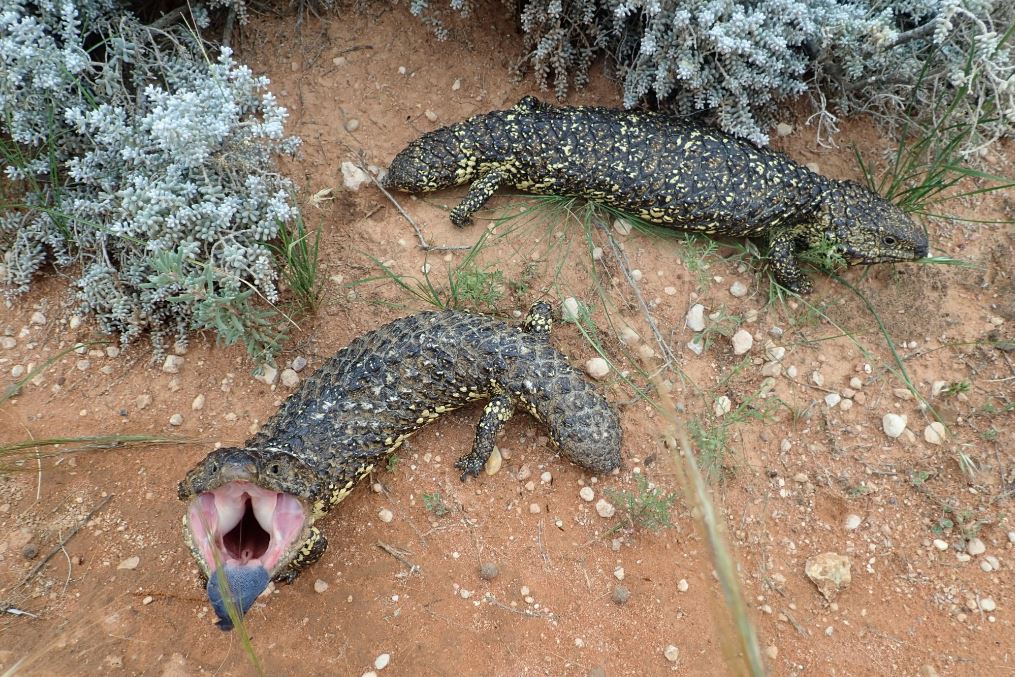
A fossil lizard discovered by researchers at Flinders University has been described as by far the largest and most bizarre skink that ever lived.
While related to shinglebacks (also called ‘sleepy lizards’) found in Australia today, Tiliqua frangens (or ‘Frangens’ for short) was as big as an arm and covered in thick armour.
The lizard lived during the Pleistocene, alongside the famous megafauna such as marsupial lions, diprotodons and short-faced kangaroos, the researchers say.
“Frangens was 1000 times bigger than the common Australian garden skink (Lampropholis guichenoti, which weigh about 2g) and has a unique chunky, spiked profile,” says lead author Dr Kailah Thorn, from the Western Australian Museum who studied the fossils as part of her PhD at Flinders University.
“It reveals that even small creatures were supersized during the Pleistocene.”

The creature was pieced together from bones unearthed from ongoing excavations at Wellington Caves in NSW and from fossils already held in museums around Australia.
“In the dig at Wellington Caves, we started finding these spiked armoured plates that that had surprisingly never been recorded before. We knew we had something interesting and unique,” explains co-author Dr Diana Fusco, from the Flinders University Palaeontology Laboratory.
Frangens is believed to be related to the living shingleback or sleepy lizard (Tiliqua rugosa), but is even larger and more heavily armoured, according to the new study published in Proceedings of the Royal Society of London B: Biological Sciences.
Read more in The Conversation: Meet the biggest and most bizarre skink ever found in Australia. It became extinct 47,000 years ago
“These large, slow armoured lizards might have filled the ecological niche of small land tortoises, absent from modern Australia,” adds co-author Professor Michael Lee (Flinders University and South Australian Museum).
The extinction of Frangens coincides with the disappearance of the megafauna and suggests these end-Pleistocene extinctions were more extensive, affecting smaller creatures as well.

“Deciphering how Pleistocene animals adapted, migrated, or what eventually caused their extinctions might help us conserve today’s fauna, which faces pressures such as changing climate and habitat destruction,” says Dr Thorn.

The name Frangens (in Latin) means to break into pieces or smash, describing how strong the jaw was.
Skinks are lizards characterised by shiny, overlapping scales, and no pronounced neck. Sleepy lizards (shinglebacks or bobtails) and blue-tongued lizards are relatively large living skinks. There are 1740 species of skinks recognised today.
The article, A giant armoured skink from Australia expands lizard morphospace and the scope of the Pleistocene extinctions (2023) by KM Thorn, DA Fusco, MN Hutchinson, MG Gardner, JL Clayton, GJ Prideaux and MSY Lee will be published in Proceedings of the Royal Society of London B: Biological Sciences 290: 20230704 DOI: 10.1098/rspb.2023.0704
https://doi.org/10.1098/rspb.2023.0704
Acknowledgements: This study was supported by a Australian Research Council Discovery Grant (DP150100264), MAXIM Foundation, Royal Society of South Australia, Australian Government Research Training Program Scholarships and Flinders University Infrastructure Grant. The Sleepy Lizard Survey is supported by the Sleepy Lizard Survey Fund, Hermon Slade Foundation and Australian Research Council Discovery Grant (DP200102880).

